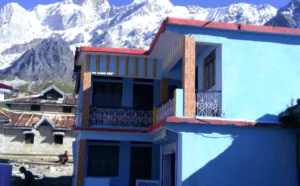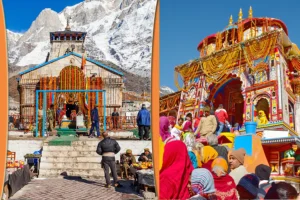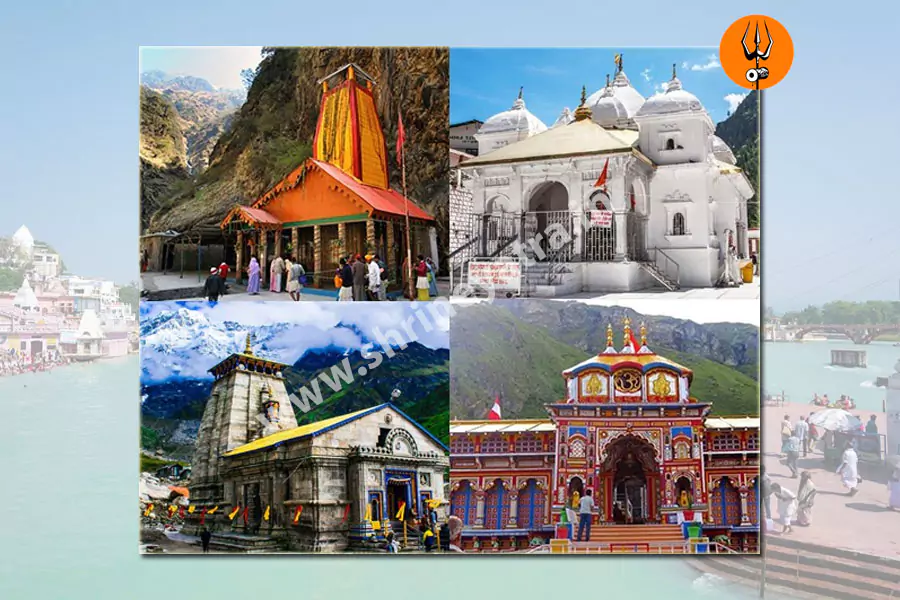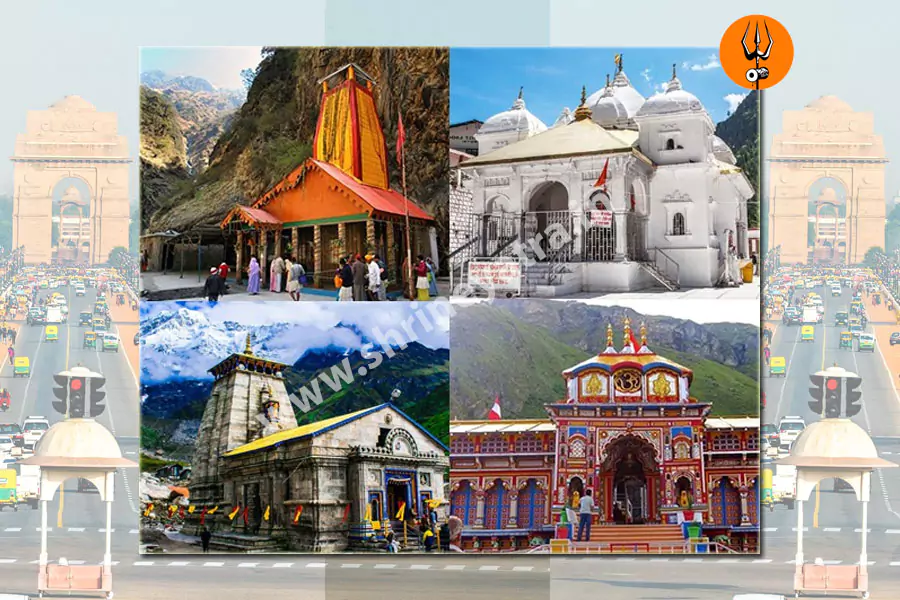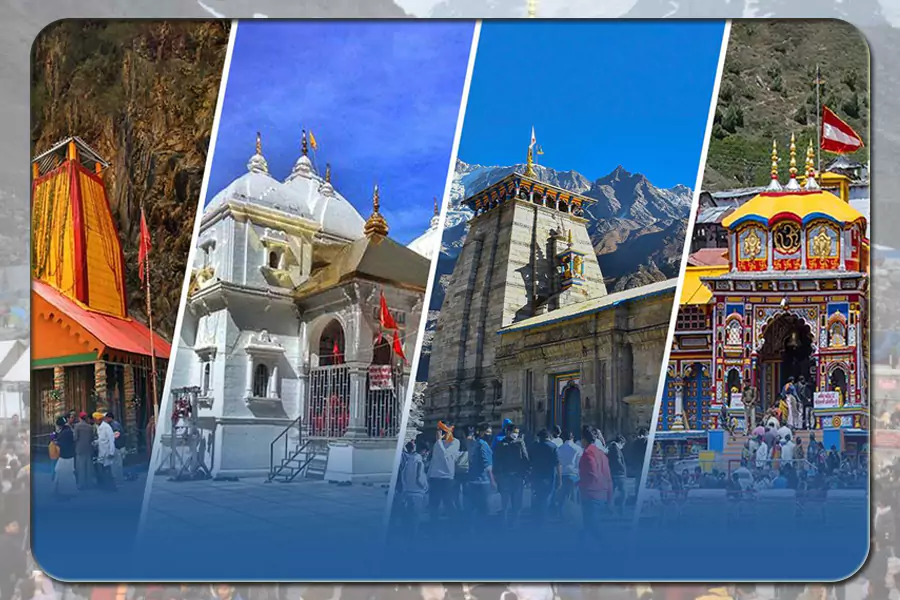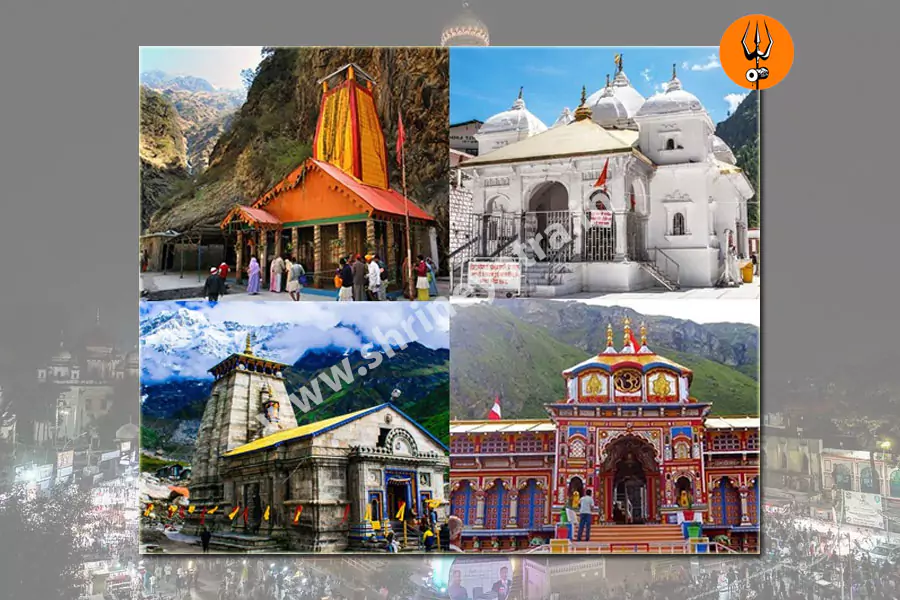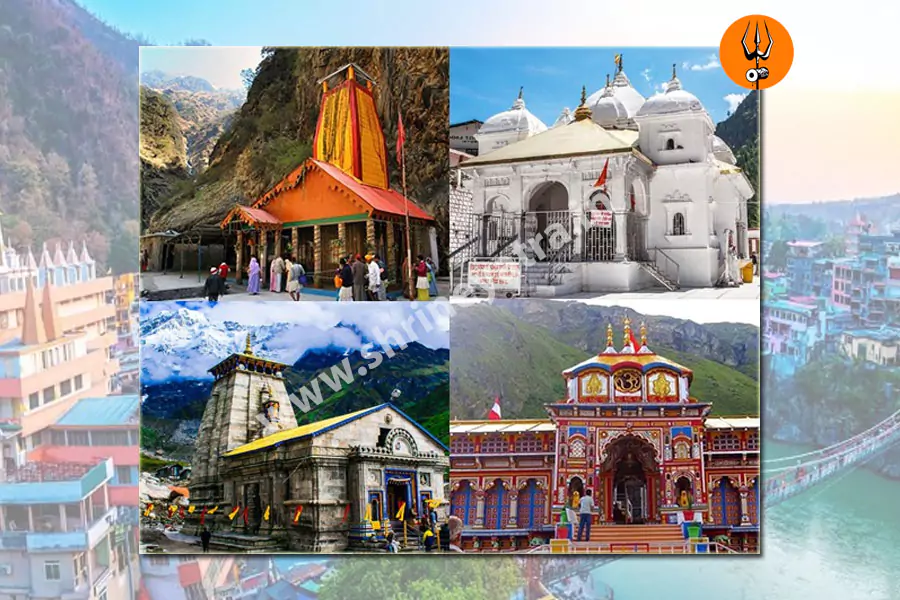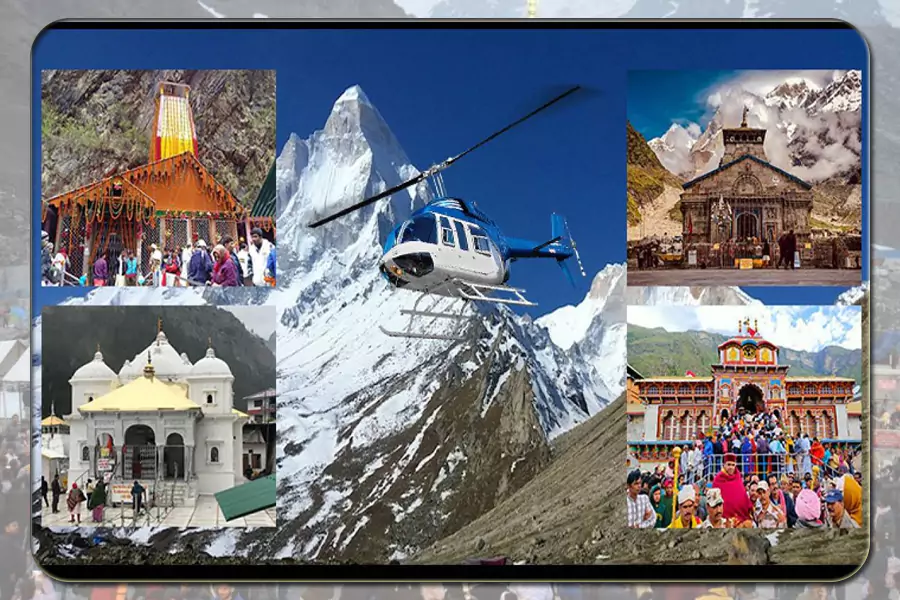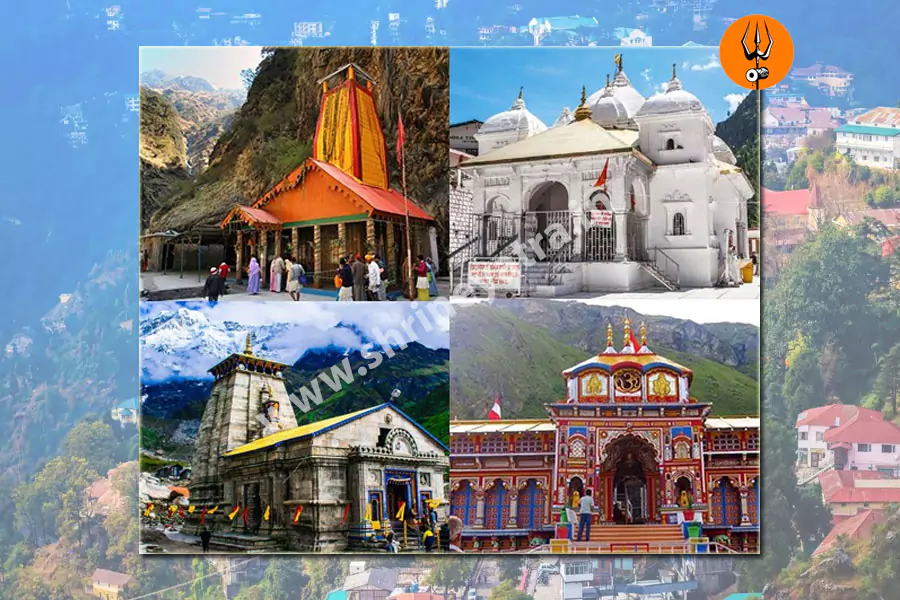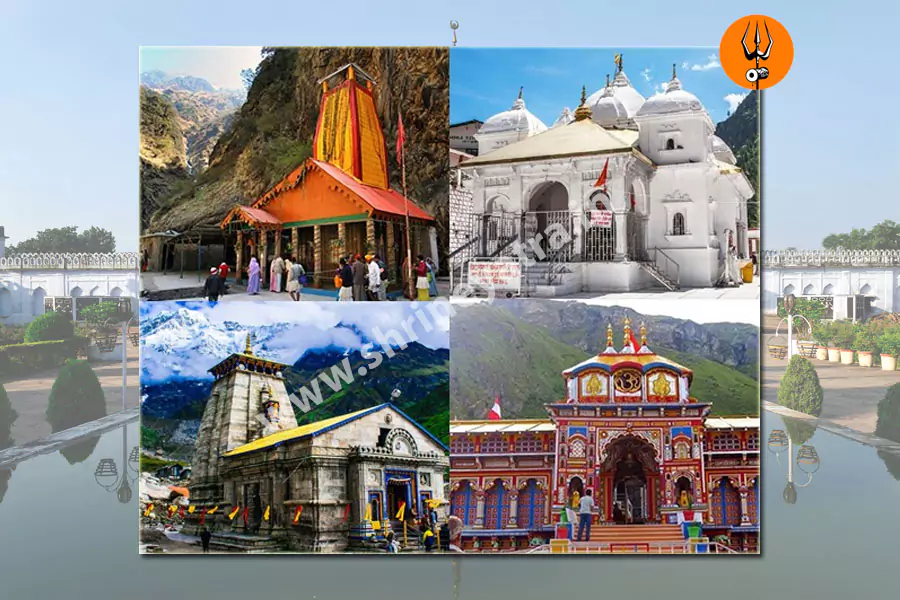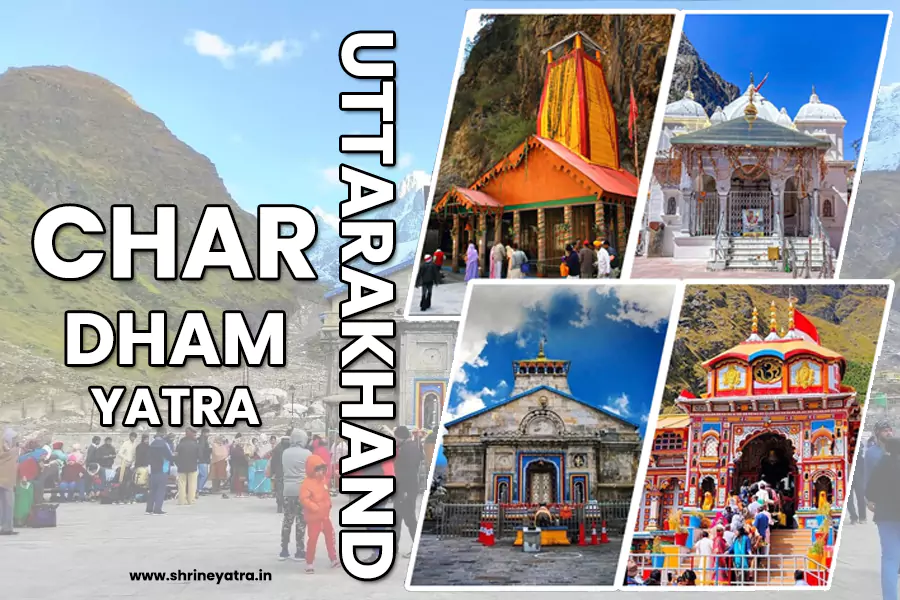
Winter Char Dham Yatra in Uttarakhand – Travel, Rituals & FAQs
Recently, Uttarakhand has launched the Winter Char Dham circuit to promote year-round tourism and attract visitors to the state during the off-season winter months
The state of Uttarakhand has introduced the Winter Char Dham circuit with the purpose of encouraging tourism throughout the year and ensuring that devotees can visit sacred places even during the cold season. This initiative allows travelers and pilgrims to experience the same spiritual essence of the traditional Char Dham journey while enjoying the serene beauty of the Himalayas in winter.
Char Dham shrines (4 revered shrines) are four holy sites i.e., Yamunotri, Gangotri, Kedarnath and Badrinath and are located in the Garhwal Himalayas. They are traditionally visited between May and November.
Uttarakhand Launched the Winter Char Dham
The Char Dham shrines of Yamunotri, Gangotri, Kedarnath, and Badrinath hold immense religious importance and are all situated in the Garhwal Himalayas. Traditionally, these sacred sites remain accessible only between May and November due to weather conditions. However, with the introduction of the winter circuit, devotees can continue their pilgrimage in alternative locations during the snowy months.
During the winter months, the presiding deities of these temples are brought to shrines at lower altitudes at:
- Kedarnath: Omkareshwar Temple in Ukhimath (Rudraprayag)
- Badrinath: Pandukeshwar in Chamoli
- Gangotri: Mukhba in Uttarkashi
- Yamunotri: Kharsali in Uttarkashi
During winter, when heavy snow makes the higher Himalayan temples inaccessible, the deities of the four shrines are ceremonially moved to their winter abodes. These sacred relocations allow worship to continue without interruption, giving devotees an opportunity to seek blessings in more accessible villages at lower altitudes.
The Char Dham Project aims to enhance connectivity to the Badrinath, Kedarnath, Gangotri, and Yamunotri by improving conditions of highways.
The government has also launched the Char Dham Project to improve road infrastructure and provide better connectivity to the four holy shrines. By upgrading highways and transportation facilities, this project not only benefits pilgrims but also supports tourism and strengthens the economy of the Himalayan region.
About Adi Shankaracharya
Adi Shankaracharya (exponent of the Advaita Vedanta) established the Char Dhams in four different directions of the country which include Badrinath, Puri, Dwarka and Rameshwaram.
It was Adi Shankaracharya, the great philosopher and spiritual leader, who established the tradition of the Char Dham pilgrimage. According to his vision, the four dhams are located in different corners of India—Badrinath in the north, Puri in the east, Dwarka in the west, and Rameshwaram in the south—together representing a complete spiritual circuit.
Advaita Vedanta is a non-dualistic philosophy that asserts the ultimate reality (Brahman) is singular and formless, with individual souls (Atman) being identical to it, and liberation (moksha) is achieved through the realization of this oneness.
The philosophy of Advaita Vedanta, taught by Adi Shankaracharya, emphasizes the oneness of the soul (Atman) with the ultimate reality (Brahman). It teaches that liberation, or moksha, is attained through self-realization and the understanding that there is no duality between the individual and the divine. This philosophy forms the spiritual foundation of the Char Dham Yatra.
The grand Himalayan ranges are home to four revered shrines where Goddess Yamuna, Goddess Ganga, Lord Shiva, and Lord Vishnu are worshipped. For centuries, countless devotees have undertaken this sacred Chardham Yatra to seek divine grace and inner peace. The Char Dham Yatra is considered a spiritual path to Moksha (liberation), as devotees believe completing this journey blesses them with eternal spiritual support.
About Winter Char Dham Yatra in Uttarakhand
During the winter season, heavy snowfall and freezing temperatures restrict access to the original temples of Char Dham. To ensure uninterrupted worship, the sacred idols of each deity are shifted to their designated winter seats every year. These seasonal abodes allow devotees to continue offering prayers even when the main shrines remain inaccessible.
This special Winter Char Dham Yatra gives an opportunity to complete the sacred journey during the off-season. With fewer crowds, the surroundings remain calm, allowing a more personal connection with divinity. The tranquil ambiance adds a unique charm to the spiritual experience, making it deeply fulfilling.
Economic Significance of Winter Char Dham Yatra
The Winter Char Dham Yatra not only holds spiritual value but also contributes to Uttarakhand’s economy. Pilgrims visiting the winter seats of the deities help boost local tourism and sustain communities that often face economic slowdowns during colder months.
From accommodations and transport services to local artisans and small businesses, many residents benefit directly from this seasonal pilgrimage. Alongside devotion, travelers also admire the mesmerizing winter landscapes of the Himalayas, which look like a pristine wonderland. With government efforts in developing better infrastructure and safety measures, the pilgrimage has become more comfortable and accessible during winters.
Winter Abodes in Uttarakhand for Char Dham Darshan
Between late November and March, the main Char Dham shrines—Yamunotri, Gangotri, Kedarnath, and Badrinath—remain inaccessible due to harsh weather. During this time, their idols are worshipped at the following winter homes:
Kharsali : Winter Seat of Goddess Yamuna
Located around 10 km from Yamunotri, Kharsali becomes the winter seat of Goddess Yamuna. When snowfall blocks Yamunotri Temple, the idol of Goddess Yamuna is moved here. Devotees continue rituals and prayers in Kharsali, where the peaceful surroundings create an intimate spiritual atmosphere.
Mukhba Village : Winter Seat of Gangotri
Mukhba Village, about 27 km from the Gangotri Temple, becomes the seasonal home of Goddess Ganga. Worship continues at the temple here throughout winter. Pilgrims visiting Mukhba witness age-old traditions preserved by the local community, making the visit both devotional and cultural.
Ukhimath : Winter Seat of Kedarnath
During winter, the idol of Lord Kedarnath is carried in a sacred procession to Omkareshwar Temple in Ukhimath. Priests of Kedarnath continue daily rituals here. The serene environment of Ukhimath attracts thousands of devotees every winter, allowing them to connect with Lord Shiva even when Kedarnath remains closed. For detailed guidance, you can check our Kedarnath Yatra Guide.
Pandukeshwar : Winter Seat of Lord Badrinath
The Yogadhyan Badri Temple in Pandukeshwar houses the idol of Lord Badrinath during winter months. This ancient temple, more than 1200 years old, continues the same rituals as Badrinath Temple. Local communities actively participate in festivities and rituals like Doli Yatra, ensuring that Lord Vishnu’s worship never ceases during this time. Learn more in our detailed Badrinath Yatra Guide.
Winter Char Dham Yatra – Rituals and Festivals
Winter at the Char Dham shrines is marked with special rituals, festive celebrations, and devotional gatherings. Ceremonies such as Doli Yatra, seasonal prayer sessions, and cultural events create a spiritually rich experience. These activities give devotees a rare chance to feel closer to the divine while celebrating the traditions of Uttarakhand.
How to Reach Winter Char Dham
1. Traveling to Kharsali (for Yamunotri)
- From Janki Chatti, Kharsali is about 5 km, which can be covered in 2 hours on foot.
- Ponies are also available for hire.
Nearest Transportation
- Barkot is the nearest road point, 40 km from Janki Chatti.
- Dehradun Railway Station (170 km) and Rishikesh Railway Station (209 km) connect the region by rail.
- Jolly Grant Airport in Dehradun is the nearest airport (192 km).
2. Traveling to Mukhba (for Gangotri)
- Mukhba lies 72 km from Uttarkashi and can be reached by taxi or local vehicles.
- Winter roads may be challenging due to snow, so travelers must check weather updates in advance.
Nearest Transportation
- Taxis from Uttarkashi are the best option, as public buses often stop services in winter.
- Using private vehicles ensures flexible travel.
3. Traveling to Ukhimath (for Kedarnath)
- Ukhimath is about 180 km from Rishikesh and 200 km from Haridwar.
- Both towns offer buses and taxis to reach Ukhimath.
Nearest Transportation
- Rishikesh Railway Station connects with major Indian cities.
- Jolly Grant Airport in Dehradun (180 km) is the closest air link.
4. Traveling to Pandukeshwar (for Badrinath)
- Pandukeshwar is 270 km from Rishikesh via NH7, passing through Devprayag, Srinagar, and Rudraprayag.
- From Haridwar, the distance is about 290 km, and from Delhi, around 520 km.
Nearest Transportation
- Jolly Grant Airport in Dehradun (270 km).
- Haridwar Junction is the nearest railway station, from where travelers can continue to Joshimath by taxi or bus.
Efficient Travel Advice for Winter Visits to the Char Dham Religious Sites
- Carry warm clothing including thermals, jackets, woolens, gloves, scarves, and waterproof boots.
- Acclimatize properly at high altitudes, avoid overexertion, and stay hydrated.
- Keep track of weather updates, road conditions, and closure notices.
- Prefer 4×4 vehicles for snowy terrains and carry essentials like blankets, food, first aid, and tire chains.
- Pack snow gear such as goggles, hand warmers, and waterproof covers.
- Book hotels or dharamshalas in advance as winter accommodation is limited.
The Winter Char Dham Yatra offers devotees a unique opportunity to experience spirituality amid snow-clad landscapes and serene surroundings. Beyond prayers and rituals, it provides peace, cultural insight, and unforgettable memories of Uttarakhand’s divine winter beauty. For complete details, you may explore our Char Dham Yatra 2026 Travel Guide.




